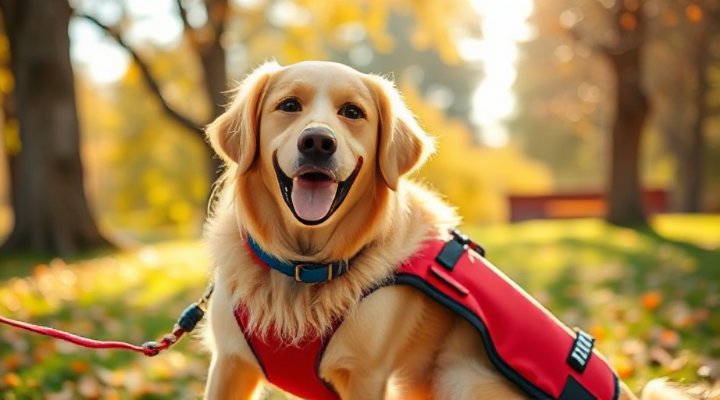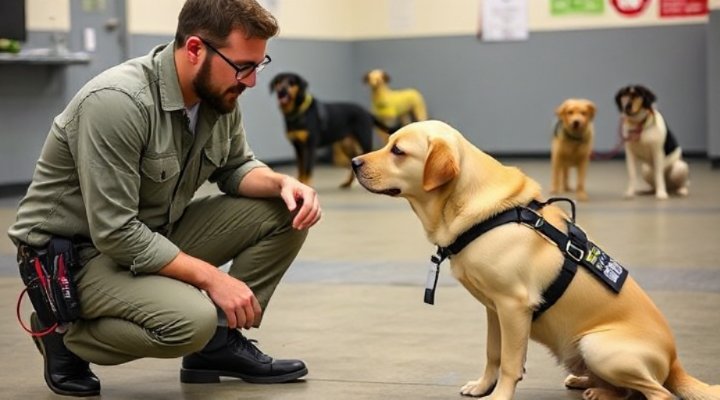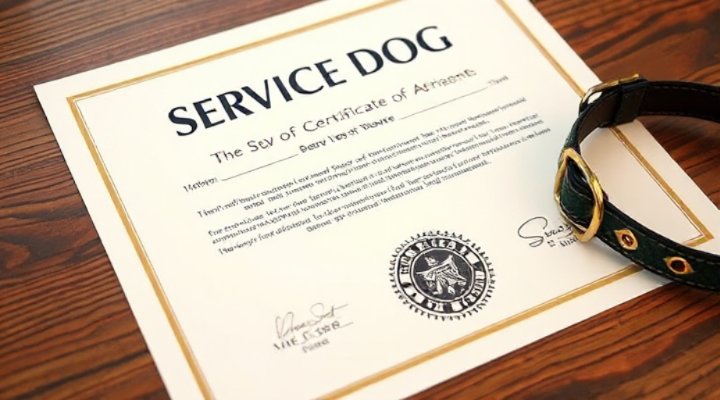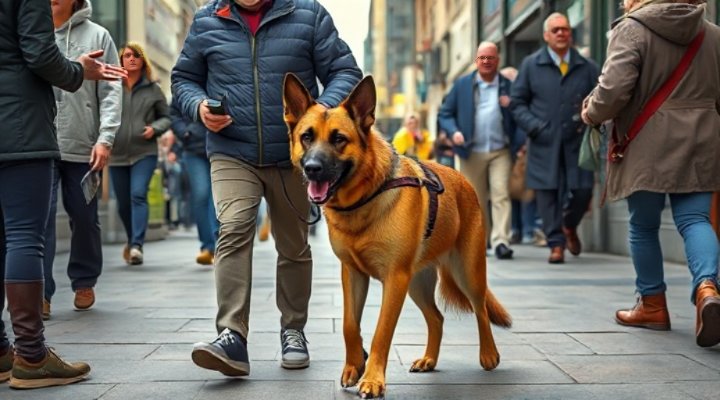Service dog training certification is more than just a piece of paper – it’s official recognition that your canine companion has mastered the skills needed to assist individuals with disabilities. Whether you’re training your own service dog or working with a professional trainer, understanding the certification process is crucial for ensuring your dog meets all official standards and requirements.

Understanding Service Dog Certification Requirements
First and foremost, it’s important to clarify that in the United States, there’s no single government-issued service dog certification. However, many organizations offer voluntary certification programs that evaluate whether a dog meets the standards outlined in the Americans with Disabilities Act (ADA). These certifications can be valuable for establishing your dog’s credentials.
The basic requirements for service dog certification typically include:
- Proof of task training specific to the handler’s disability
- Demonstration of public access skills
- Behavioral evaluations
- Health clearances

Choosing the Right Certification Program
With numerous organizations offering service dog certification, it’s crucial to select a reputable program. Look for organizations that:
- Follow ADA guidelines
- Have experienced evaluators
- Provide transparent testing criteria
- Are recognized by businesses and housing providers
Some well-regarded options include Assistance Dogs International member organizations. Meanwhile, if you’re still in the early stages of training, our guide on dog training basics can help build foundational skills.
The Certification Process Step-by-Step
Obtaining service dog training certification typically involves several key steps:
- Task Training: Your dog must be trained to perform specific tasks that mitigate your disability.
- Public Access Training: Your dog must behave impeccably in all public settings.
- Health Certification: Up-to-date vaccinations and a clean bill of health from your vet.
- Evaluation: Formal assessment of your dog’s skills and behavior.

During my own journey certifying my service dog, Max, I found that consistency was key. We practiced his tasks daily and gradually increased the difficulty of public access scenarios. Remember, certification isn’t a one-time event but rather confirmation of ongoing training and good behavior.
Common Certification Challenges
Many teams face similar obstacles during the certification process:
- Distraction issues in public settings
- Task reliability under stress
- Handler consistency with commands
- Generalization of skills to new environments
These challenges are normal! If you’re struggling, consider reviewing our article on effective training treats to boost motivation, or look into professional training classes in your area.

Maintaining Certification Standards
After earning certification, ongoing training is essential to maintain your service dog’s skills. Regular practice sessions, continued socialization, and periodic evaluations will help ensure your dog remains at peak performance.
Key maintenance activities include:
- Daily reinforcement of tasks
- Monthly public access practice
- Annual health check-ups
- Behavioral reassessments as needed
Remember, a certified service dog is a working animal, not a pet. While they deserve love and care, their training and behavior standards must always come first in public settings.

Your Rights with a Certified Service Dog
With proper certification, you and your service dog are protected under various laws:
- ADA access rights to public spaces
- Fair Housing Act protections
- Air Carrier Access Act provisions
However, it’s important to note that businesses can only ask two questions: (1) Is the dog a service animal required because of a disability? and (2) What work or task has the dog been trained to perform? They cannot demand certification papers or medical documentation.
For more information on service dog nutrition during training, check out our guide on hypoallergenic dog food options, especially if your service dog has dietary sensitivities.
Final Thoughts on Service Dog Certification
Earning service dog training certification is a significant achievement that opens doors to greater independence and accessibility. While the process requires dedication and patience, the bond you’ll build with your service dog and the assistance they provide make every moment worthwhile.
Whether you’re just beginning your journey or preparing for final certification, remember that each small step brings you closer to official recognition. And if you ever feel overwhelmed, the service dog community is full of supportive individuals who’ve been where you are now.
Related Keywords: service dog certification, service dog training, official service dog recognition, service dog requirements, how to certify a service dog
